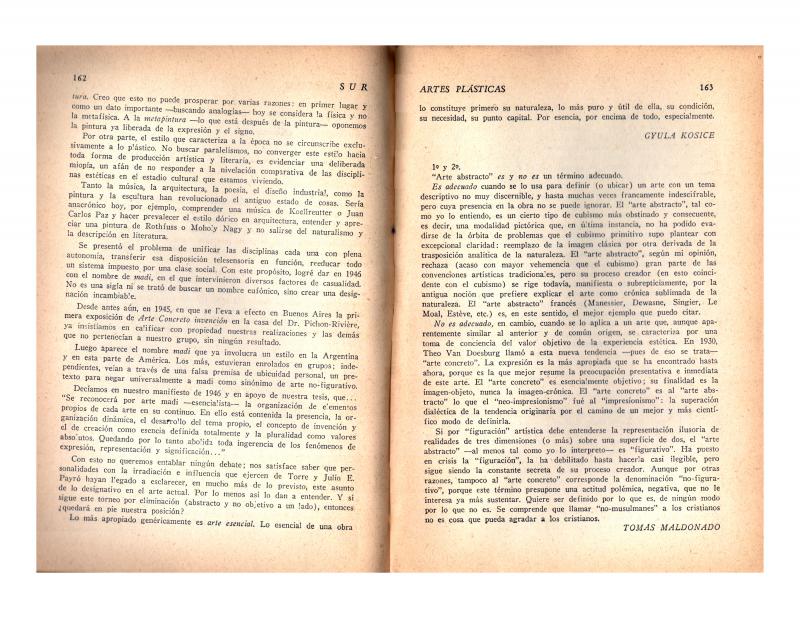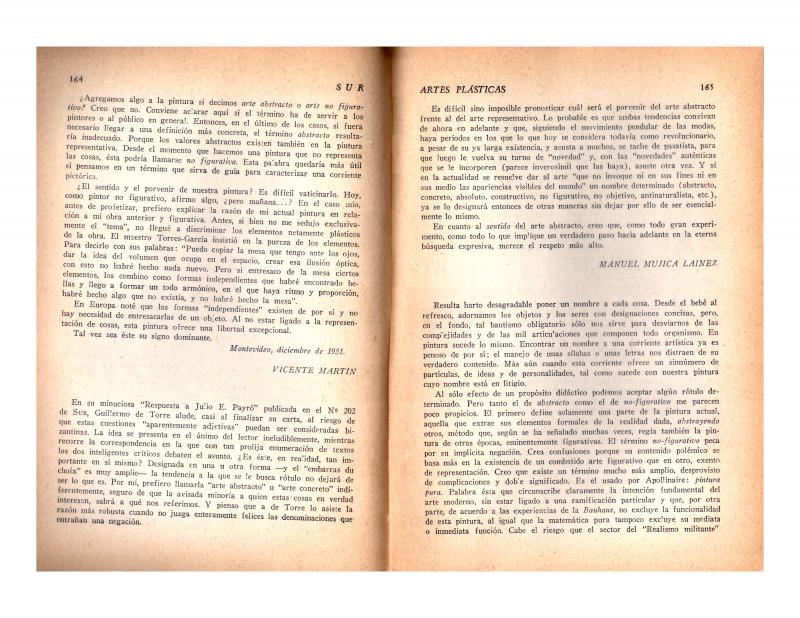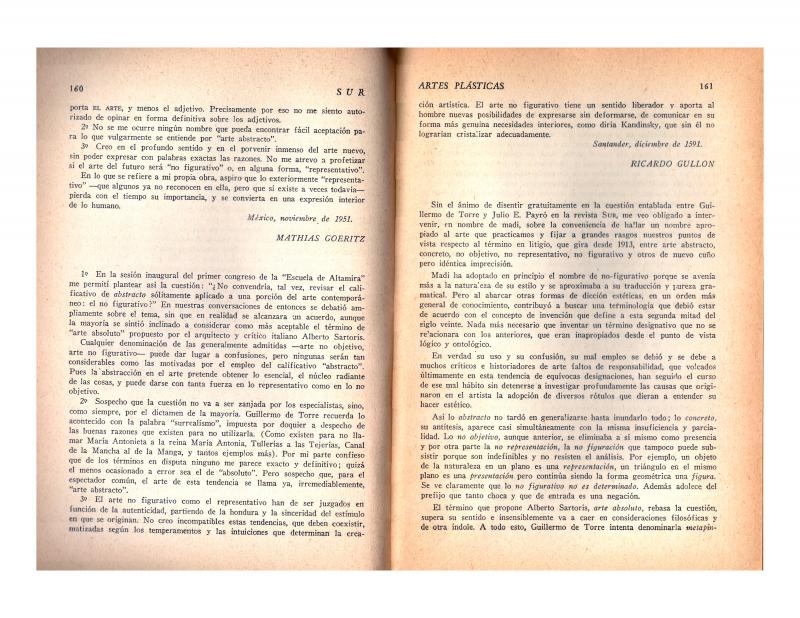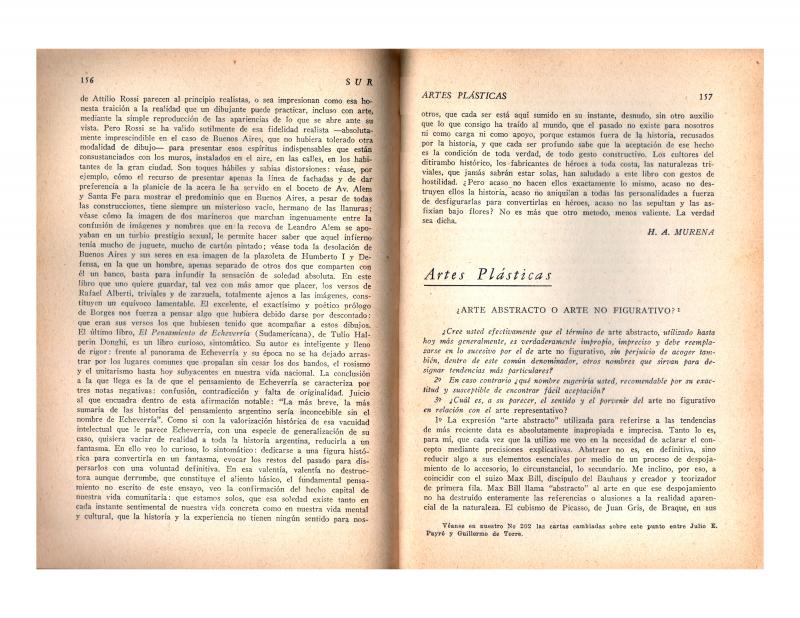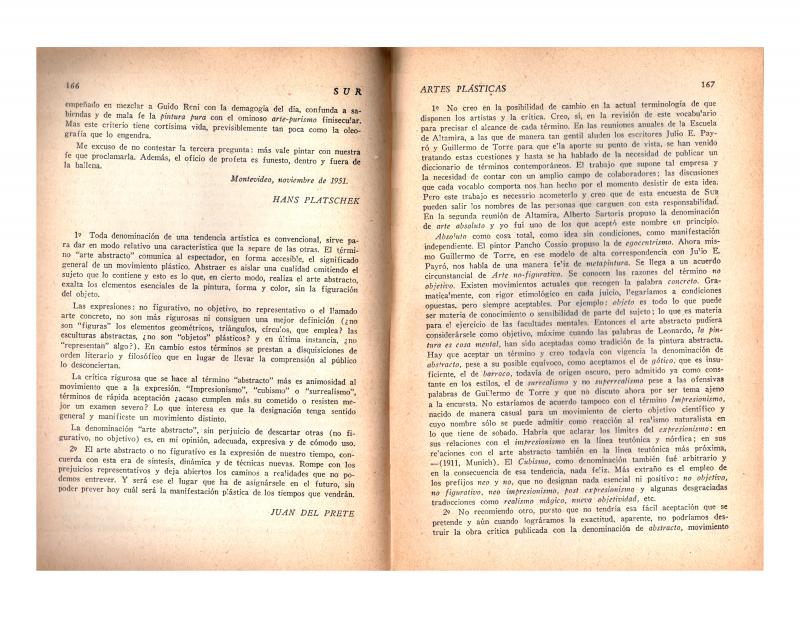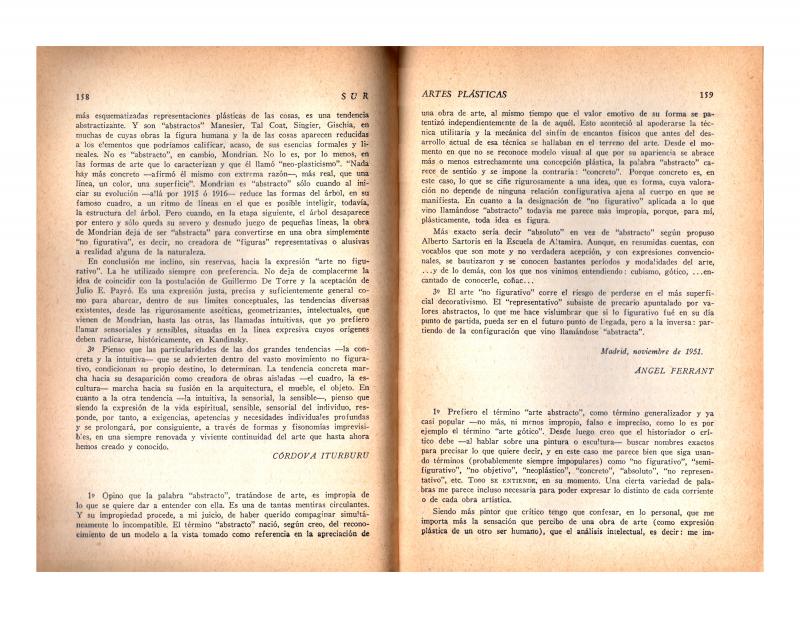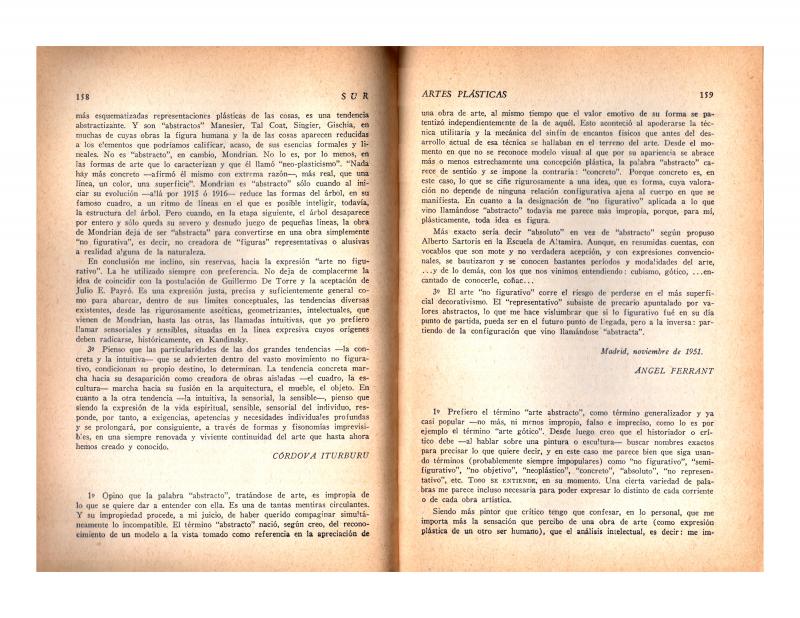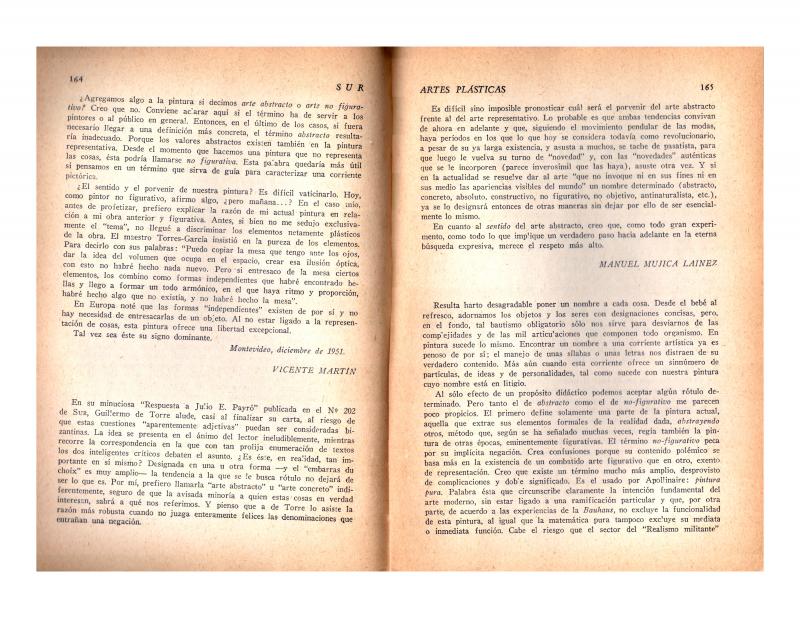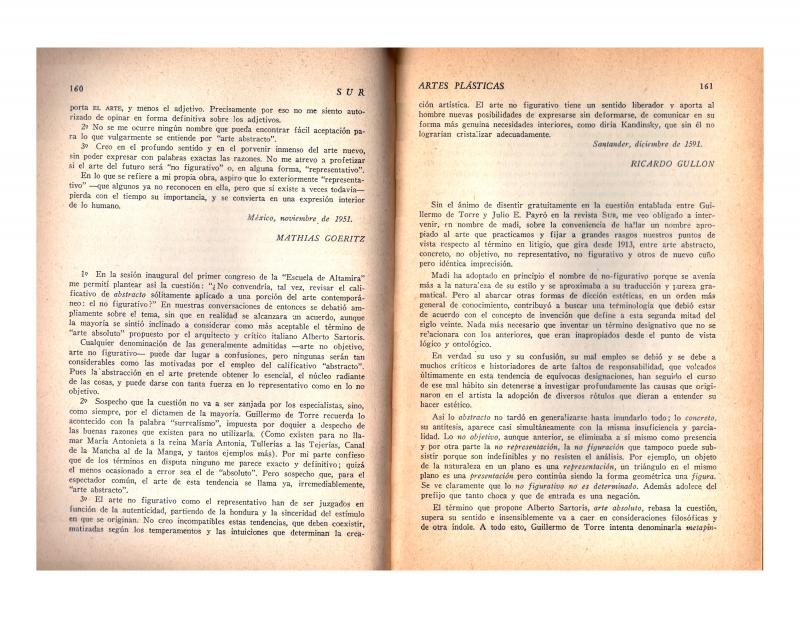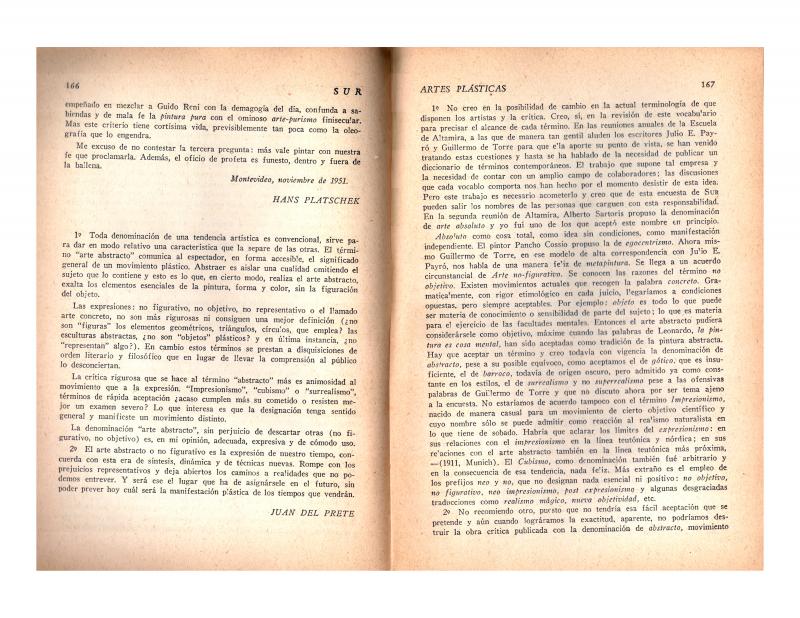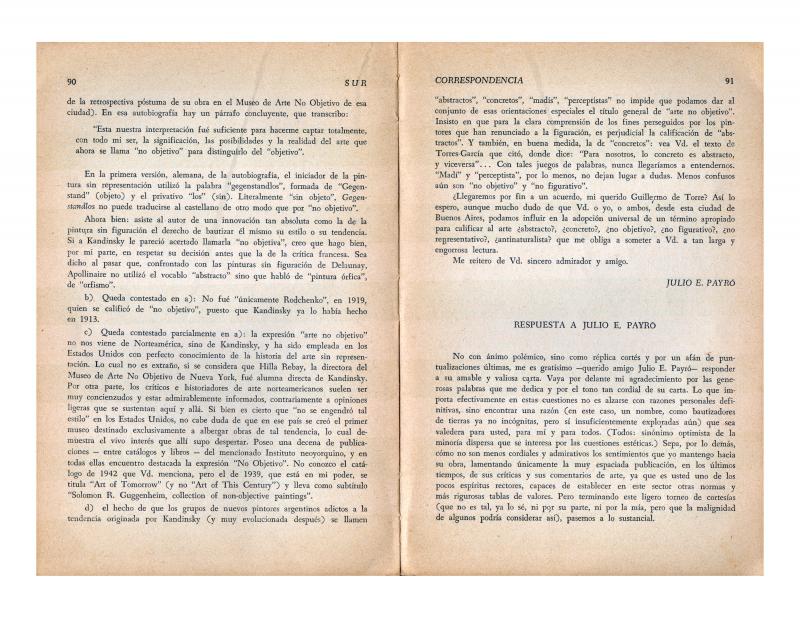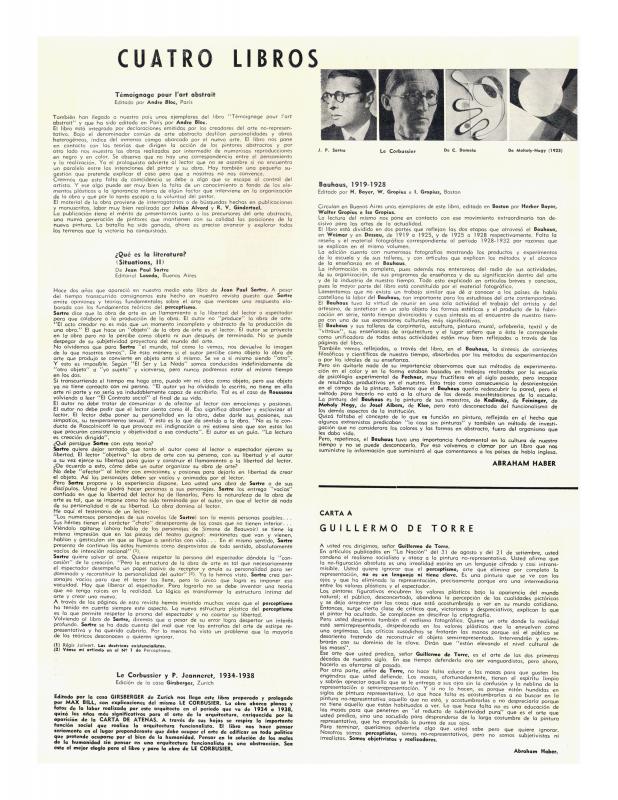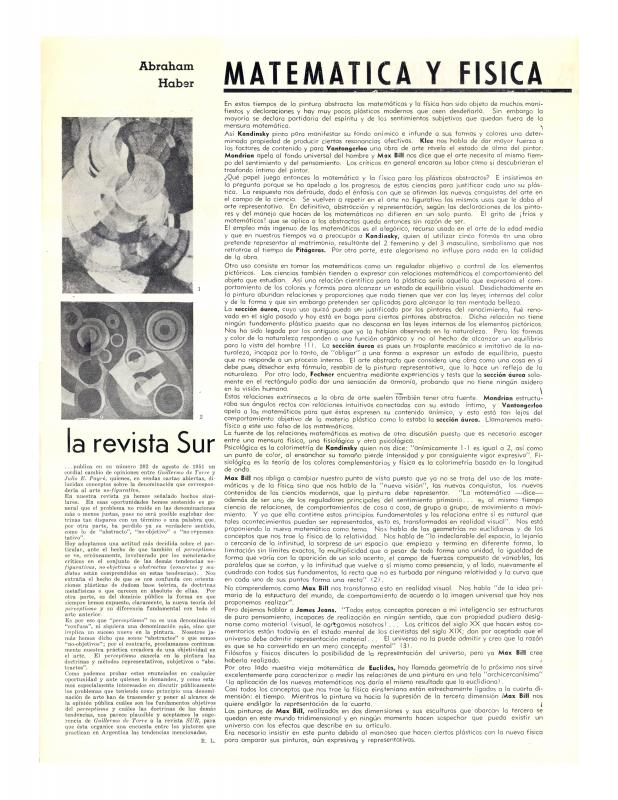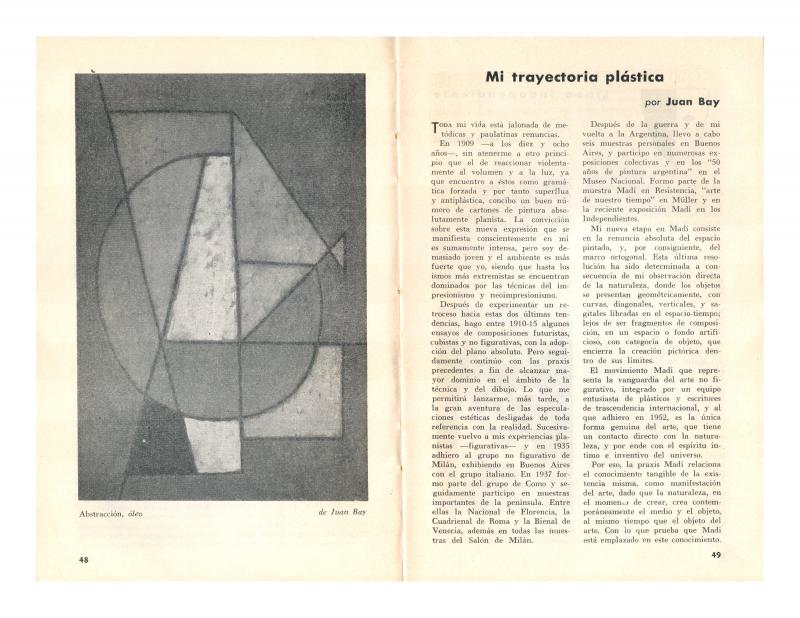Gyula Kosice (originally Fernando Fallik) (1924–2016) was born in Kosice, Slovakia, and moved to Argentina at age 4, where he spent his working life. Kosice was copublisher of Arturo [Arthur] magazine in 1944 and joined the Madí Group. He used new materials in his work, experimenting with Plexiglas, glass, and neon tubes, being also interested in Kinetic Art, to which he added the use of water. The first issue of the Madí Nemsor del Movimiento Madí Universal [Madí Nemsor of the Universal Madí Movement] magazine was published in 1947, and included the Manifesto of the trend; subsequent issues were called Arte Madí [Madí Art]. The final edition, number 7/8, appeared in June 1954, with Gyula Kosice as Director of the magazine.
Sur [South], one of the major literary magazines in Argentina, was founded and financed by Victoria Ocampo (1890–1979). It first appeared in 1931 and was in existence until 1988, although its publication schedule was somewhat flexible. The earliest contributors were poets and writers such as Jorge Luis Borges (1899–1986) and Norah Borges (1901–98), Guillermo de Torre (1900–71), Oliverio Girondo (1890–1967), Leopoldo Marechal (1900–70), Adolfo Bioy Casares (1914–99) and Silvina Ocampo (1903–94), among many others.
The survey asked the following questions: 1. Do you firmly believe that the term abstract art, which has been widely used until now, is improper and imprecise, and should now be replaced by the term nonfigurative art, but with the option of including, under the umbrella of this term, other names that might be used to identify more specific tendencies? 2. If not, what name would you suggest, based on the exactness of its meaning and its chances of widespread acceptance? 3. In your opinion, which are the meaning and the future of non-figurative art as related to representative art? In Buenos Aires, the survey was answered by Cayetano Córdoba Iturburu (1899–1977), Manuel Mujica Láinez (1910–84), Gyula Kosice (1924), Juan Del Prete (1897–87), and Tomás Maldonado (1922). Some foreigners also responded: Mathias Goeritz (1915–90), Hans Platschek (1923–2000), Vicente Martín (1911–98), Ricardo Gullón (1908–91), Eduardo Westerdhal (1902–83), and Ángel Ferrant (1890–1961). The links to foreign artists were, to some extent, due to the friendship between Ángel Ferrant and Guillermo de Torre, but were also a result of their cultural activities at the Escuela de Altamira [School of Altamira] in Santillana del Mar, Spain.
The survey was announced following the publication of Julio E. Payró and Guillermo de Torre’s open letters in issue number 202 of Sur magazine, which appeared in August 1951. Those discussions, in turn, were an extension of the ones generated by the French critic Léon Degand’s exhibition Arte Abstracto, del arte figurativo al arte abstracto [Abstract Art, from Figurative Art to Abstract Art], which opened in Buenos Aires in July 1949, and by the prologue written by de Torre for Joaquín Torres García’s exhibition in April 1951. The debate over the name of Abstract Art, Concrete Art, Nonfigurative or Nonobjective Art is documented in the following documents: 757530, 757649, 757489, 762983, 742825, 742858, 742171, 742187, 757674, 742202, 742156, 742838, 742837, 742834, 742715, and 742567.
It should be remembered that this article was also published in March/April 1952, in number 209/210 of Sur magazine, on pages 161–63. This article was chosen because it documents Kosice’s desire to inform the readers of Arte Madi Universal [Universal Madí Art] magazine about his involvement in the survey proposed by Payró and de Torre in Sur magazine.

